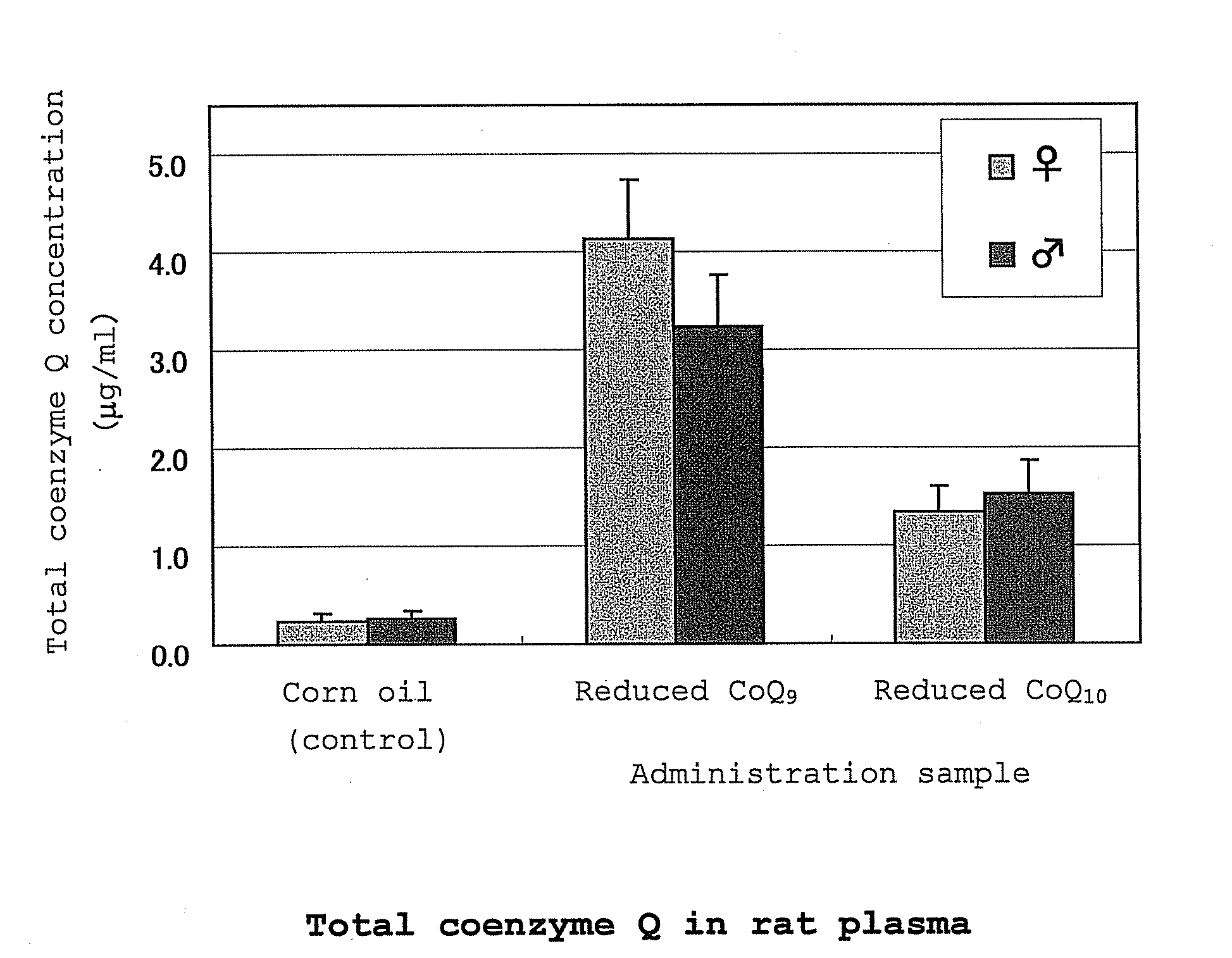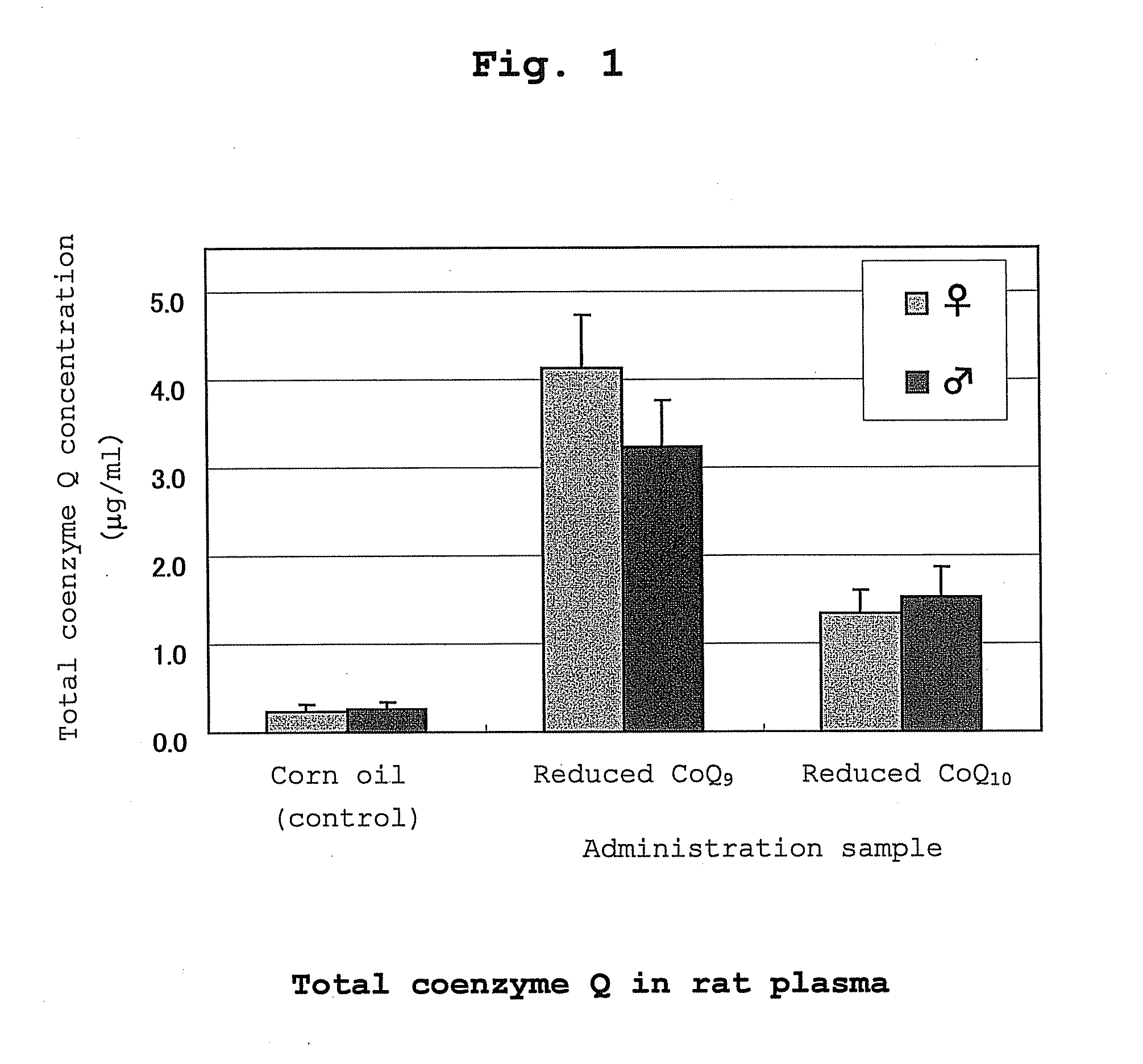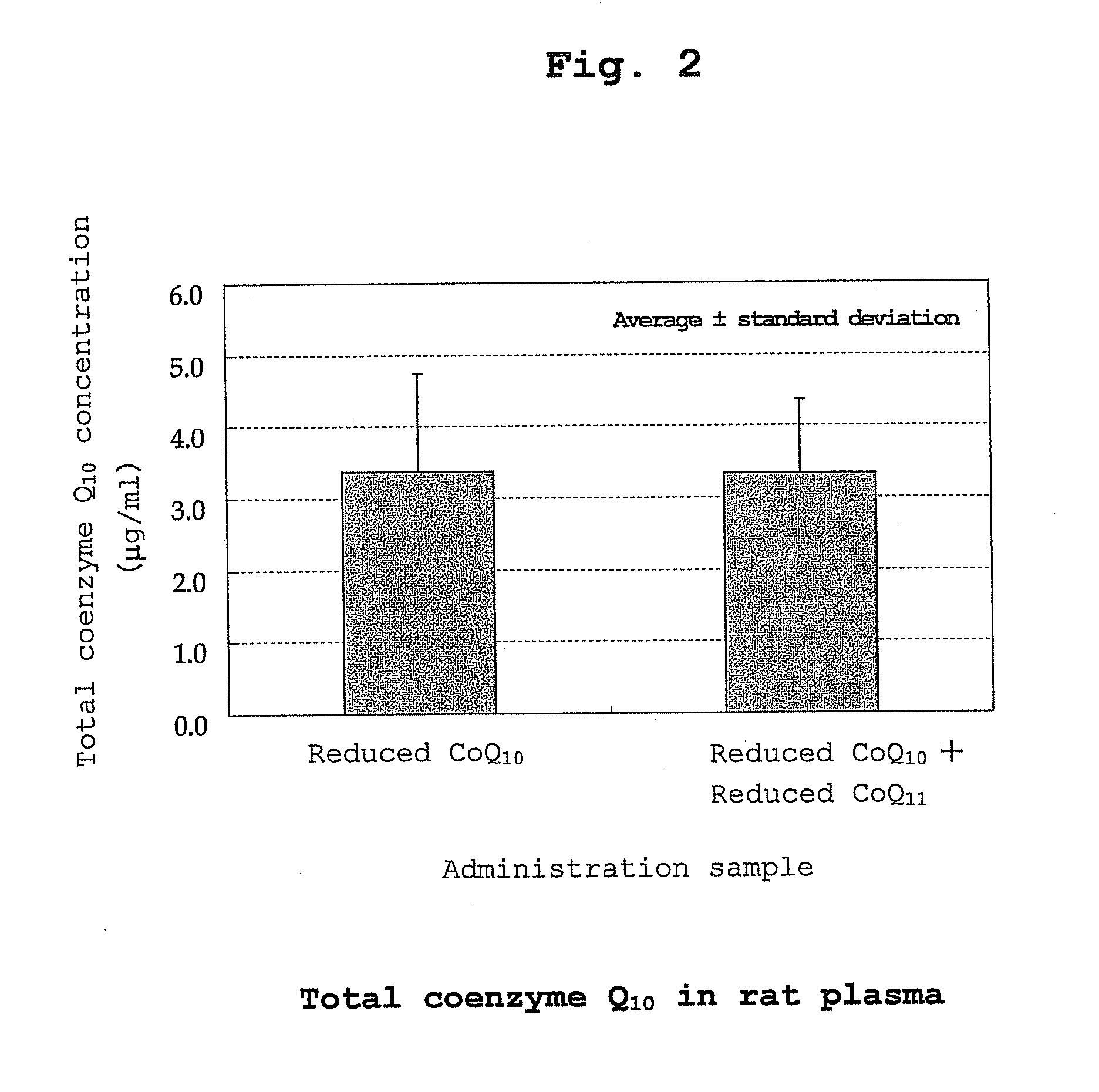Stabilization method of reduced coenzyme q10
a technology of coenzyme q10 and stabilization method, which is applied in the direction of ether preparation, peptide/protein ingredients, metabolic disorder, etc., can solve the problems of inability to study the stability of reducing coenzyme q10, and inability to complete removal or block oxygen during the above-mentioned processing and preservation. , to achieve the effect of reducing co
- Summary
- Abstract
- Description
- Claims
- Application Information
AI Technical Summary
Benefits of technology
Problems solved by technology
Method used
Image
Examples
production example 1
[0118] Oxidized coenzyme Q10 (100 g) and L-ascorbic acid (60 g) were added to 1000 g of ethanol, and the mixture was stirred at 78° C. to perform a reduction reaction. After 30 hr, the mixture was cooled to 50° C., and 400 g of ethanol was added while maintaining at the same temperature. The ethanol solution (containing 100 g of reduced coenzyme Q10) was cooled to 2° C. at a cooling rate of 10° C. / hr with stirring to give a white slurry. The obtained slurry was filtered under reduced pressure, the wet crystals were washed with cold ethanol, cold water and cold ethanol in this order (temperature of cold solvent used for washing, 2° C.) and dried under reduced pressure (20-40° C., 1-30 mmHg) to give white dry crystals (95 g). All operations except reduced-pressure drying were performed under a nitrogen atmosphere. The weight ratio of reduced coenzyme Q10 / oxidized coenzyme Q10 of the obtained crystals was 99.4 / 0.6.
production example 2
[0119] Oxidized coenzyme Q9 (10 g) and L-ascorbic acid (7 g) were added to 100 g of ethanol, and the mixture was stirred at 78° C. to perform a reduction reaction. After 30 hr, the mixture was cooled to 50° C., and ethanol (40 g), hexane (140 g) and water (140 g) were added in this order while maintaining at the same temperature. After removing the aqueous layer, the organic layer was concentrated under reduced pressure to give reduced coenzyme Q9 as crystals.
production example 3
[0120] The reduced coenzyme Q10 (9.85 g) obtained in Production Example 1 and reduced coenzyme Q9 (0.15 g) obtained in Production Example 2 were mixed to give reduced coenzyme Q10 containing 1.5 wt % of reduced coenzyme Q9 (reduced coenzyme Q10 / oxidized coenzyme Q10=99.4 / 0.6).
PUM
| Property | Measurement | Unit |
|---|---|---|
| Pharmaceutically acceptable | aaaaa | aaaaa |
Abstract
Description
Claims
Application Information
 Login to View More
Login to View More - R&D
- Intellectual Property
- Life Sciences
- Materials
- Tech Scout
- Unparalleled Data Quality
- Higher Quality Content
- 60% Fewer Hallucinations
Browse by: Latest US Patents, China's latest patents, Technical Efficacy Thesaurus, Application Domain, Technology Topic, Popular Technical Reports.
© 2025 PatSnap. All rights reserved.Legal|Privacy policy|Modern Slavery Act Transparency Statement|Sitemap|About US| Contact US: help@patsnap.com



